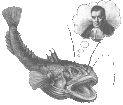UW Aquatic & Fishery Sciences Quantitative Seminar
Ray Hilborn
School of Aquatic and Fishery Sciences, University of Washington
Rebuilding the sockeye salmon run to the Kvichak River
Abstract
The Kvichak River in western Alaska has been the largest and most valuable salmon population in the world, with a total return of over 48 million fish in 1965. However in recent decades returns of 10 million fish have been unusual and the average return since 2000 has been about 5 million fish.It is well established that the Kvichak run consists of many discrete stocks and very different spawning habitats, including large rivers, streams, ponds, beaches on Islands, and beaches on the mainland.
In this talk I will explore the hypothesis that large returns to the Kvichak depend upon the island beach spawning fish, and that these habitats have lower productivity and the stocks that spawn on Island beaches have been eroded over the last few decades so that large escapements now end up overcrowding other habitats while the Island beaches remain largely empty.
Under this hypothesis rebuilding the Kvichak run to tens of millions of fish will require rebuilding the Island beach spawning component.

